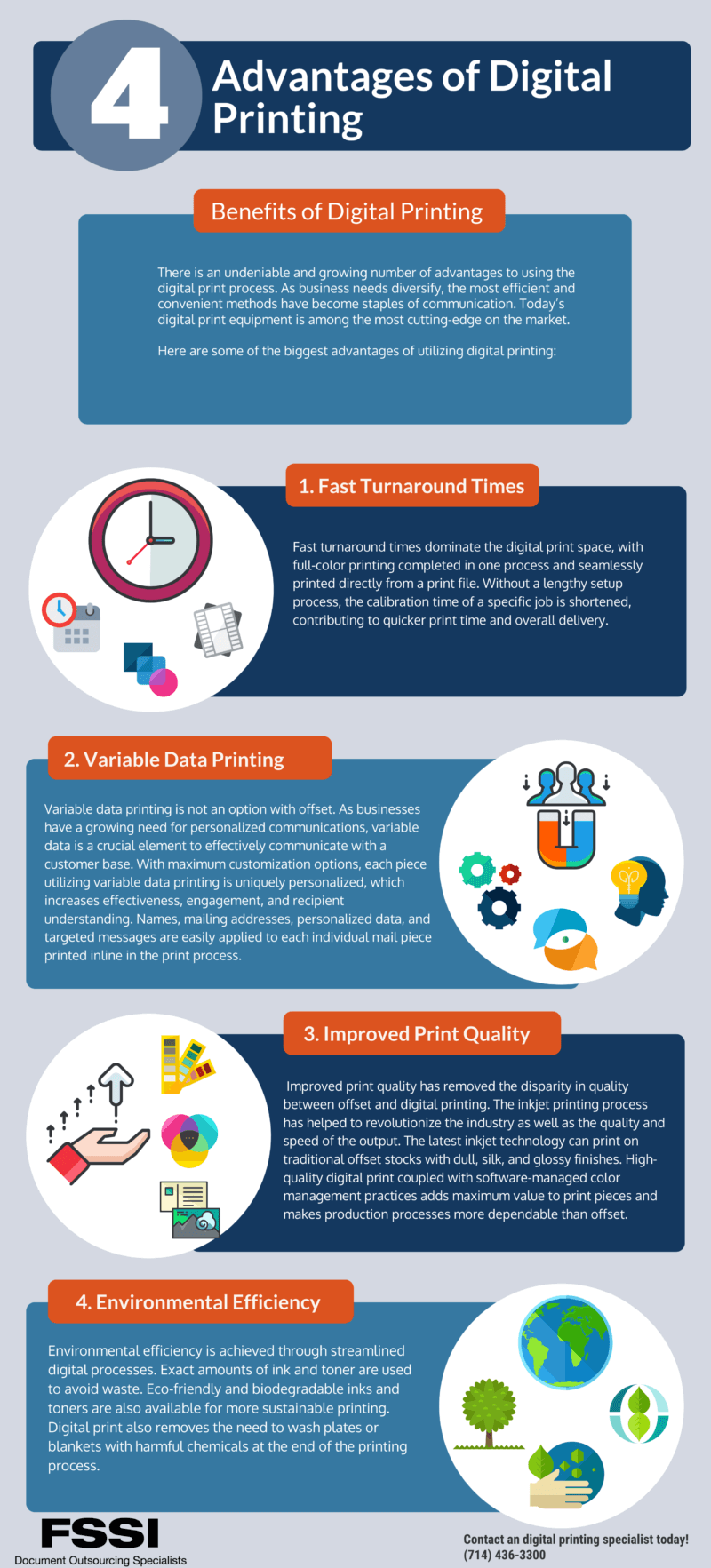Digital Printing Things To Know Before You Get This
Digital Printing Things To Know Before You Get This
Blog Article
Things about Digital Printing
Table of ContentsSome Of Digital PrintingThe Definitive Guide for Digital Printing6 Easy Facts About Digital Printing DescribedThe smart Trick of Digital Printing That Nobody is DiscussingThe Definitive Guide to Digital PrintingExamine This Report about Digital Printing
Variable data printing, such as direct mail with personalized codes and addresses, is preferably suited for digital printing. Digital fast printing only needs 4 steps of design, evaluation, printing and binding to obtain every little thing done. Digital quick printing has an unmatched advantage: print on need.According to PMMI, electronic printing permits brand names and suppliers to react promptly to consumer needs while boosting the supply chain, minimizing warehousing cost and waste, and delighting in faster time to market. That all audios excellent, however how does this modern technology do all that? The major differentiator of these modern technologies is that there are no set-up costs and no plates with digital printing.
Digital Printing for Beginners
This results in quicker turnaround time and reduces expense when making use of electronic printing.
Digital printing is extremely adaptable, so it's easy to make modifications to the plan layout promptly. It all goes back to the plates.
A lot more inventory can suggest even more waste down the road. With standard printing techniques, short-run printing is just not feasible. Because a fantastic design can make or break your product, electronic printing regularly creates high-grade, clear and vivid graphics each time. Digital printing on flexible bags includes the brilliant, vivid, and accurate graphics that practically beckon consumers to get to out and touch them.
Digital printing is the process of printing digital-based photos directly onto a variety of media substratums. There is no requirement for a printing plate, unlike with offset printing. Digital data such as PDFs or desktop computer posting data can be sent out straight to the digital printing machine to print theoretically, picture paper, canvas, material, synthetics, cardstock and various other substrates.
The Buzz on Digital Printing
According to PMMI, digital printing enables brand names and producers to respond promptly to consumer needs while improving the supply chain, reducing warehousing cost and waste, and enjoying faster time to market. That all audios wonderful, yet exactly how does this modern technology do all that? The major differentiator of these modern technologies is that there are no set-up fees and no plates with digital printing.
According to Wikipedia, the best difference in between digital printing and traditional techniques such as lithography, flexography, gravure, or letterpress is that there is no need to replace printing plates in digital printing, whereas in these analog printing approaches home plates are continuously changed. This results in quicker turnaround time and reduces price when utilizing electronic printing.

Digital Printing for Dummies
With traditional printing methods, short-run printing is just not possible. Since a great design can make or break your product, electronic printing regularly produces top quality, clear and colorful graphics each time.

According to PMMI, electronic printing allows brands Recommended Site and suppliers to react swiftly to client demands while boosting the supply chain, lowering warehousing cost and waste, and appreciating faster time to market. That all sounds excellent, but how does this technology do all that? The significant differentiator of these innovations is that there are no set-up costs and no plates with electronic printing.
3 Easy Facts About Digital Printing Described
According to Wikipedia, the check my reference best distinction between electronic printing and typical methods such as lithography, flexography, gravure, or letterpress is that there is no demand to replace printing plates in digital printing, whereas in these analog printing techniques home plates are continuously changed. This results in quicker turn-around time and reduces expense when utilizing digital printing.
Speedy production implies getting your product to market faster. It additionally means it's easier and faster to make modifications later, when you alter a dish, include a SKU, or produce seasonal packaging. Digital printing is highly adaptable, so it's very easy to make adjustments to the package layout swiftly. It all returns to home plates.

The Only Guide for Digital Printing
Digital printing is the process of printing digital-based images straight onto a variety of media substrates. There is no requirement read this article for a printing plate, unlike with balanced out printing. Digital documents such as PDFs or desktop posting data can be sent straight to the digital printing machine to publish on paper, photo paper, canvas, fabric, synthetics, cardstock and other substratums.
Report this page